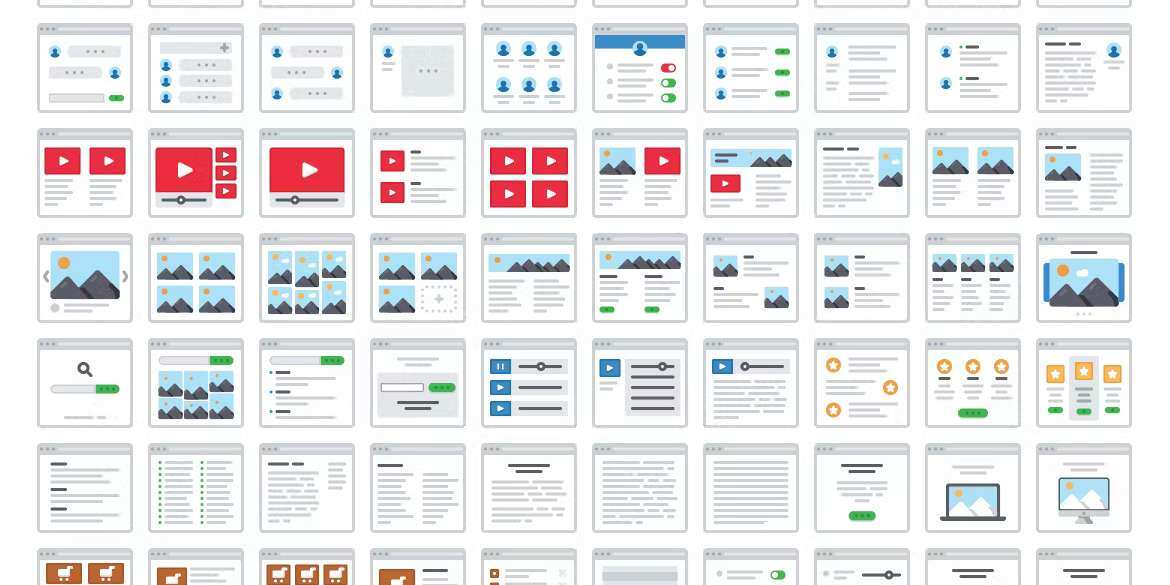User Experience (UX) case studies are critical tools for showcasing the impact of design on user satisfaction and business outcomes. These are more than just stories about designs. They are carefully chosen narratives that showcase a designer's style, brand, and problem-solving process. For founders and marketing teams, understanding the structure and value of UX case studies can be instrumental in improving product offerings and customer engagement.
In this article, I want to help you understand how to lean into the pain points your UI design solved, how your design elements added additional user value and your step-by-step process for usability testing and competitive analysis.
UX design projects should focus on user-friendliness across your UX portfolio, and your case study highlights should emphasise how your designers work together.
The Value of UX Case Studies
UX case studies are more than a portfolio piece; they testify to a designer's expertise and problem-solving abilities. They demonstrate a user-centred approach, explaining design decisions and showcasing the results and impact on business metrics and user satisfaction[6]. For businesses, these case studies can serve as evidence of the ROI of investing in UX design, with research showing that every $1 invested in UX can bring $100 in return.
Key Elements of a UX Case Study
The key elements of a UX case study are essential for effectively showcasing your design process, problem-solving skills, and the impact of your work. Here are the critical components to include:
- Overview: This section sets the stage for your case study, providing a brief introduction to the project, its goals, and the context in which it was undertaken.
- Problem Statement: Clearly articulate the specific problem or challenge your design aims to address. This helps to frame the case study and demonstrates the purpose behind your work.
- Users and Audience: Identify the target users or audience for the project. Understanding and defining who you are designing for is crucial in UX design, as it guides the design process and decisions.
- Roles and Responsibilities: Outline your role and responsibilities in the project and those of any team members with whom you collaborated. This clarifies your contribution and the collaborative nature of the work.
- Scope and Constraints: Describe the project's scope, including any constraints such as budget, time, or technological limitations that influenced the design process.
- Process and What You Did: This is the heart of the case study, where you detail the steps you took to address the problem, from initial research and ideation to prototyping and user testing. Highlight your methodological approach and the design decisions you made along the way.
- Outcomes and Lessons Learned: Share the results of your design efforts, including any measurable impact on the problem you set out to solve. Also, reflect on what you learned from the project, including any challenges you faced and how you overcame them. This demonstrates your ability to adapt and grow as a designer.
- User Research: Incorporate findings from user research to show how insights from real users informed your design decisions. This underscores the user-centred approach to your work.
- Final Solution: Present the final design solution, explaining how it addresses the problem and meets your users' needs. Include visuals and describe the rationale behind key design choices.
- Next Steps and Learnings: Conclude with any next steps for the project or further iterations of the design. Sharing learnings from successes and failures or challenges showcases your reflective practice and commitment to continuous improvement.
By including these components, your UX case study will provide a comprehensive and engaging narrative of your design journey, demonstrating your skills, thought process, and the value you bring as a UX designer.
Tips for Creating Compelling UX Case Studies
Creating a compelling UX case study involves a structured approach highlighting your design process, problem-solving capabilities, and user research insights. Here are vital tips to enhance your UX case study:
- Start with a Clear Problem Statement: Begin by articulating a specific problem or opportunity statement. This sets the foundation for your case study by focusing on a particular issue or potential for positive change, ensuring your design process is goal-oriented.
- Define Your UX Design Process: Outline the steps you took to address the problem, including understanding the problem, conducting user research, analyzing findings, sketching solutions, prototyping, and testing. This demonstrates your systematic approach to design and problem-solving.
- Showcase User Research: Highlight how user research informed your design decisions. Include details about your research methodology, participant recruitment, and how insights from the research influenced the final design. This underscores the user-centred nature of your work.
- Reflect on Challenges and Learnings: Discuss any challenges you encountered and how you overcame them. Also, share lessons learned and how they have influenced your approach to design. This shows your ability to adapt and learn from experience, which is valuable in UX design.
- Include Success Metrics: Establish clear metrics to measure your design's impact on the problem you set out to solve. Tracking progress against these metrics provides tangible evidence of your design’s effectiveness and impact on the business.
- Use Visuals Effectively: Incorporate organized images and visuals to tell your design story compellingly. Visuals should complement the text and help readers quickly understand your design process and outcomes.
- Be Concise and Clear: Ensure your case study is easy to read and understand. Use clear, concise language and structure your content to guide the reader through your design journey without overwhelming them with unnecessary details.
- Personalize Your Narrative: Inject your personality into the case study. This helps differentiate your work and gives potential employers or clients a sense of who you are as a designer. Your case study is not just a showcase of your work but also an expression of your unique approach and style.
By following these tips, you can create a UX case study that demonstrates your design skills and problem-solving abilities and engages and informs your audience, making a solid case for your expertise in UX design.
How to analyse the success of a UX case study
To analyse the success of a UX case study, you should consider several key factors that contribute to the effectiveness and impact of the design solution presented. Here's a structured approach to evaluating a UX case study's success:
- Visual and Functional Appeal: Assess the aesthetic and functional aspects of the design, such as the layout, colour scheme, typography, and imagery. A successful UX design, like Instagram's, often features a clean and straightforward layout that is visually appealing and easy for users to navigate.
- Intuitiveness: Determine the user interface's intuitiveness. A successful UX design should have a straightforward navigation system that allows users to access features without confusion or frustration.
- Interactivity: Evaluate the interactive elements of the design. Features encouraging user engagement, such as liking, commenting, and sharing, contribute to a successful UX by making the experience more dynamic and participatory.
- Personalisation: Consider the level of personalization in the design. A UX design that uses algorithms to curate personalized content for users, like Instagram, can significantly enhance user engagement and satisfaction.
- User Research and Insights: How user research informed the design decisions. Successful UX case studies typically include detailed user research that reveals insights into user behaviour, needs, and preferences.
- Problem-Solving Efficacy: Analyze how effectively the design addresses the problem stated in the case study. The design should provide straightforward solutions to the user's challenges and improve their overall experience.
- Success Metrics: Review the success metrics established in the case study. Metrics should be specific, measurable, achievable, relevant, and time-bound (SMART), and there should be data to show progress against these metrics.
- Impact on Business Goals: Examine the impact of the UX design on business goals. A successful UX case study should demonstrate a measurable improvement in business metrics such as conversion rates, user engagement, and retention.
- Lessons Learned: Reflect on the lessons learned from the project. Successful case studies often share insights from successes and failures, contributing to a deeper understanding of UX design principles.
- User Feedback and Iteration: Look for evidence of iterative design based on user feedback. Successful UX designs are often the result of continuous testing, feedback, and refinement.
By considering these factors, you can understand what makes a UX case study successful and how well the design solutions meet user needs and business objectives.
Conclusion
UX case studies blend art and science, telling the unique story of a project's impact on users and the business. They are essential for demonstrating a company's commitment to user-centred design and can significantly influence customer acquisition and satisfaction.
By prioritising UX in their business strategy, companies can forge stronger connections with their customers and achieve lasting success in the digital age.
For founders and marketing teams, leveraging the power of UX case studies can lead to better product design, improved customer experiences, a stronger brand, and increased revenue.
At BIAS, we work with UX, product design teams and founders to optimise the customer experience, user journey, and product onboarding process. Learn more about REVEAL and how we help, and book a time with the team.




